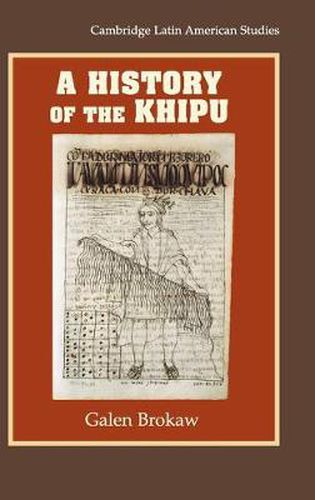Readings Newsletter
Become a Readings Member to make your shopping experience even easier.
Sign in or sign up for free!
You’re not far away from qualifying for FREE standard shipping within Australia
You’ve qualified for FREE standard shipping within Australia
The cart is loading…






This book begins by proposing a theoretical model that reconciles orality-literacy studies and media theory in order to avoid the specious dichotomization of societies into those with and those without writing. The more relevant issue is the way in which a given society distributes semiotic functions among the various media that it employs and the forms of economic and political integration within which such media function. This theoretical model then informs a history of the Andean khipu from pre-Columbian times through the first 120 years of the colonial period. The first half of the book examines early Andean media and their socioeconomic and political contexts, culminating with the emergence of Wari and subsequently Inca khipu. The second half of the book documents and analyzes the continued use of khipu by indigenous individuals and communities in their interactions with Spanish officials, chroniclers, and priests. The study corrects many common misconceptions, such as the alleged mass destruction of khipu in the late sixteenth century. Even more importantly, it highlights the dialogue that occurred in the colonial period between the administrative and historiographic discourses of alphabetic Spanish and those of native Andean khipu genres.
$9.00 standard shipping within Australia
FREE standard shipping within Australia for orders over $100.00
Express & International shipping calculated at checkout
This book begins by proposing a theoretical model that reconciles orality-literacy studies and media theory in order to avoid the specious dichotomization of societies into those with and those without writing. The more relevant issue is the way in which a given society distributes semiotic functions among the various media that it employs and the forms of economic and political integration within which such media function. This theoretical model then informs a history of the Andean khipu from pre-Columbian times through the first 120 years of the colonial period. The first half of the book examines early Andean media and their socioeconomic and political contexts, culminating with the emergence of Wari and subsequently Inca khipu. The second half of the book documents and analyzes the continued use of khipu by indigenous individuals and communities in their interactions with Spanish officials, chroniclers, and priests. The study corrects many common misconceptions, such as the alleged mass destruction of khipu in the late sixteenth century. Even more importantly, it highlights the dialogue that occurred in the colonial period between the administrative and historiographic discourses of alphabetic Spanish and those of native Andean khipu genres.